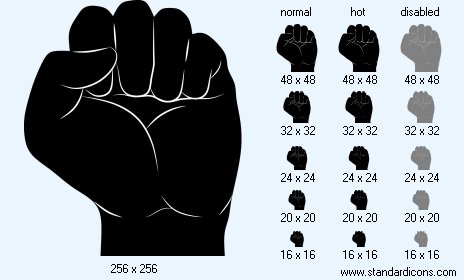


|
| ||||||||
|
|
Strike Icon |
|
Icon sizes: 256x256, 48x48, 32x32, 24x24, 20x20, 16x16, 512x512
File formats: ICO, GIF, PNG, BMP
Picking An Appropriate Image Format When Making Graphics.
There are innumerable image formats that should be utilized for storing web graphics and for a relatively raw website maker this can often turn into a major problem because you will have to know how to use a particular image format, offered in this article is a take on the advantages and issues of some commonly used image formats.If you find yourself drawn to graphic making or want to create pictorial depictions for your site, it is imperative to know about the varied file formats and their traits so that you can utilize the appropriate format for an icon. Some of the commonly used file formats for images are GIF, JPEG and PNG, all of these formats boasts of a fair share of advantages so lets talk about the benefits and drawbacks of utilizing these formats, the type of image format that will meet the expectations your website and optimizing your images for the web usage.
GIF: The full form is Graphics Interchange Format; this is one of the more well known file types. The image format is well accepted because of its image size that is very small which makes uploading a breeze. Also like JPEG, details are not lost in this format ; this equates to the fact that you could store the image without using up a lot of space and deteriorating the image quality. The format is also known to support transparency in graphics, it is by far the most commonly used formats for web graphic making. Unlike the other formats, animation is also possible in GIF. If you would like to go for GIF file optimization, it is necessary to restrict the size of the file; it is recommended that you select a 32 color palette to create the least possible size.
JPEG: This stands for Joint Photographic Experts Group; the file format is commonly called JPG and is usually used in web designing. One of the principle pros of utilizing this type of image is that you will be able to save the pictures in true color that offers you as many as 16 million colors; making this file type appropriate for storing photographs and images that have vast color range. One of the problems of utilizing JPG is the information loss that will have to be tackled every time the image is stored; this means that the image is susceptible to blurriness and a lot of details may be lost. Unlike the GIF format, support for transparency is not provided in this format. If you are utilizing a superior image editing software for instance, the Adobe Photoshop, you will be able to choose the image quality and the image file size but it is vital to understand that a lower resolution will mean a small size, which is convenient to upload.
PNG: Is stands for Portable Network Graphics and is a fairly new file type. PNG is available in two forms; PNG-8 which is the 8 bit color format and the PNG-24 which offers 24 color graphics. PNG-8 can compress images with great detail and without the customary loss of information seen in GIF files; this leads to better quality pictures and fast uploads. However, PNG-24 is not as efficient as JPG when you need to store photos and other images that merit the use of a vaster color palette. The file type is not limited by loss; this means that the image maintains its crispness and quality. PNG-24 offers the transparency feature and you can utilize different levels of transparency in this format. When you use this file format the graphics are professional looking because they do not have the jagged edges when pitched against a contrasting background like GIF files.
Copyright © 2009-2022 Aha-Soft. All rights reserved.
|
